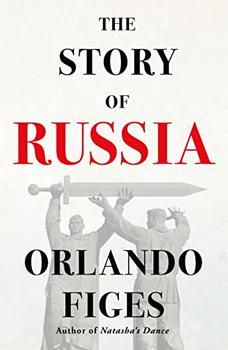Summary | Excerpt | Reviews | Beyond the Book | Readalikes | Genres & Themes | Author Bio

The Rus quickly settled down and assimilated into the Slav populace. Settlements like Old Ladoga were polyethnic communities with a Viking warrior elite, Slav and Finnic farmers and craftsmen. The Rus adopted the Slavs' language, names, customs and religious rituals, a process of assimilation accelerated by their shared conversion to Christianity during the tenth century. For this reason there are few Scandinavian traces in the Russian language or place names in Russia – a marked contrast with the heavy Viking influence on both language and place names in England and Germany.
The Rus made a strong impression on the Arabs who encountered them. Ibn Fadlan met a group of merchants at Itil, on the Volga near the Caspian Sea, in 921:
I have seen the Rus as they came on their merchant journeys and encamped by Itil. I have never seen more perfect physical specimens, tall as date palms, blond and ruddy; they wear neither tunics nor kaftans, but the men wear a garment which covers one side of the body and leaves a hand free. Each man has an axe, a sword, and a knife, and keeps each by him at all times. Each woman wears on either breast a box of iron, silver, copper, or gold; the value of the box indicates the wealth of the husband. Each box has a ring from which depends a knife. The women wear neck-rings of gold and silver. Their most prized ornaments are green glass beads. They string them as necklaces for their women.
Itil was the capital of the Khazar state, or khaganate, a multi-confessional trading empire, headed by a Turkic warrior elite, which extended from the Aral Sea to the Carpathian Mountains, from the Caucasus to the upper Volga forest lands. It had an ordered government, efficient means of tax collecting and the military power to protect the river trading routes against the nomadic tribes, the most dangerous being the Polovtsians (also known as Kipchaks or Cumans). Founded as a series of scattered settlements in the middle of the first millennium, Kiev had developed as a Khazar stronghold controlling the Dnieper River on the trading route between the Baltic and Byzantium.
The Khazar influence on the development of Kievan Rus is a matter of controversy. Some scholars think that Khazars played a more important part than the Vikings or the Slavs. Byzantine and Arab writers described the Rus as vassals of the khaganate, linked to it through marriages. The first Rus rulers called themselves khagans, suggesting that they derived their authority from the Khazars. They certainly had better relations with the Khazars than allowed by the medieval chronicles, which paint a picture of unending raids and violence by the Turkic-speaking Khazar tribes against peaceful Russian settlers. Historians of Russia in the nineteenth century relied completely on these chronicles. They told a story of the nation's beginnings as an epic struggle by the agriculturalists of the northern forest lands against the horsemen of the Asiatic steppe. This national myth became so fundamental to the Russians' European self-identity that even to suggest that their ancestors had been influenced by the Asiatic cultures of the steppe was to invite accusations of treason. In fact raids by the steppeland tribes were infrequent, and there were long periods of peaceful coexistence, trade, cooperation, social intermingling and even intermarriage between the Slavs and their nomadic neighbours on the steppe. The influence of the steppeland tribes was manifested in the Rus elite's adoption of their dress and status symbols, such as the wearing of belts studded with heavy metal mounts and bridles with elaborate sets of ornaments. We need to think of early Rus, not as a story of hostile confrontation between the forest settlers and steppe nomads, but as one of largely peaceful interaction between all the peoples of Eurasia. We should think of it, perhaps, not in terms of ethnic groups at all, but as a trading union of diverse groups – Slavs, Finns, Vikings and Khazars.
Excerpted from The Story of Russia by Orlando Figes. Copyright © 2022 by Orlando Figes. Excerpted by permission of Metropolitan Books. All rights reserved. No part of this excerpt may be reproduced or reprinted without permission in writing from the publisher.
Your guide toexceptional books
BookBrowse seeks out and recommends the best in contemporary fiction and nonfiction—books that not only engage and entertain but also deepen our understanding of ourselves and the world around us.